Question and Answer – Diabetes
Dear Your own Vet,
My cat was diagnosed with Diabetes mellitis yesterday. She now will not eat and is in a kind of a coma. What do I do? Please help?
Kaitlyn King
Dear Kaitlyn,
HOW DOES DIABETES MAKE MY PET SICK?
WHICH PETS ARE AT RISK FOR BECOMING DIABETIC?
HOW DO I GIVE INSULIN INJECTIONS TO MY PET?
WHAT DO I DO IF MY PET ON INSULIN GOES INTO A COMA OR LOOKS WEAK AT HOME?
GENERAL CARE OF THE DIABETIC PET
WHAT IS DIABETES?
Diabetes mellitis is a disease where the body cannot move sugar out of the blood into the cells where it is needed. Blood sugar sits normally between 3 and 5 mmol/l but can increase in stress situations (especially in cats) to up to 10 mmol/l and still be considered normal. Most diagnosed insulin dependent diabetics have blood sugar levels over 18 mmol/l and up to over 30 mmol/l when diagnosed. There are two forms of diabetes in animals:
1. Due to a lack or shortage of insulin.The pancreas ( a small organ lying behind the stomach) produces insulin. Disease of the pancreas such as pancreatitis can damage the pancreas. Sometimes the immune system attacks the insulin producing cells in the pancreas, which makes them stop working and in some cases we don’t know why the pancreas stops making insulin. Think of insulin as a taxi that drives sugar from home to work. Without insulin, sugar can’t get to work inside the cells and sits in the blood, getting higher and higher.
2. There is enough insulin but the body develops “insulin resistance.” The body no longer recognizes normal levels of insulin and thus won’t allow glucose to be moved into the cells.
HOW DOES DIABETES MAKE MY PET SICK?
If the body can’t get access to the sugars it needs for energy, your pet will feel lethargic and hungry at the same time. He will start to eat a lot more than he used to, but despite eating more, the sugar from the diet still can’t get to where it is needed to do it’s job of providing energy.
The body feels like it is starving so it starts to break down fat for energy. The fat gets broken down and then released into the bloodstream to travel to the liver. To get the energy out of fat, the liver has to extract the fat from the blood and turn it into energy. The liver is only able to process a certain amount of fat per hour, as it works quite slowly. When the body breaks down fat faster than the liver can handle it, the excess fat doesn’t get changed to energy, but to acetone like chemicals called ketone bodies that get released into the bloodstream. These ketone bodies are very acidic. The acid in the body is very unhealthy as the body can only work at a neutral pH. If the body becomes too acidic, it stops working and animals are in danger of falling into a coma from a combination of no energy and a very acidic body pH. This is called a ketoacidotic coma and is very hard to treat. Fat can also be absorbed by the liver faster than it can process and thus the liver tries to store the fat in the liver. The fat in the liver can build up to the point where the liver can’t work properly anymore. See our article on fatty liver syndrome and the treatment thereof: Liver Disease in Pets
Pets can also get dehydrated when they collapse because, with Diabetes mellitis, the urine becomes very dilute as the extra glucose in the blood gets filtered into the urine and draws water to itself by osmosis. Cats can develop diabetes and “self cure” themselves after being on insulin for any period of time. Dogs are permanent diabetics and never get better.
SYMPTOMS OF DIABETES IN PETS
- Drastic weight loss
- Animals eat as if they are starving all the time and may steal food from the table or dustbin
- Animals are very thirsty, drinking all the time
- Urine is very watery and if dried up, feels sticky
- Animals begin to wet indoors and have night time “accidents”
- Dog’s eyes look glassy or blind as they develop cataracts from the high sugar.
- Sudden collapse and weakness of the legs
- Lethargy
- Vomiting
- Stinky breath or Halitosis (Ketone bodies on the breath can only be smelled by some people)
- Coma
The symptoms are listed in the order they usually appear as the disease progresses. It is unusual for a perfectly healthy pet to go into a coma overnight. They usually show changes in appetite, water consumption as well as weight loss before they become deathly ill. It is unfortunate that people who have obese pets and have them on diet to try lose the weight often see the weight loss as a good thing and are used to their pets eating night and day, so these initial symptoms may go unnoticed until the animal is quite ill already.
DIAGNOSIS OF DIABETES
A blood sugar that is very high ( usually over 18 mmol/l but can be lower) and urine that is dilute and has glucose in the urine as well as ketone bodies in the urine leads to a positive diagnosis of diabetes.
HOW IS DIABETES TREATED?
Treatment of Diabetes mellitis depends on the type of Diabetes. A diagnosis of uncomplicated diabetes is NOT a good reason to put your pet to sleep/euthanize your pet.
If your pet is still happy, running around and eating then the Diabetes is called:
UNCOMPLICATED DIABETES
Your pet will usually be admitted to the vet for about three to four days. He/she will be given a different diet (low calorie diet). These diets contain fewer simple sugars and fats and higher fiber so that the energy and sugar from them gets released slowly into the blood, allowing the body to process them all easily without blood sugar suddenly going very high, then low again after the insulin shot. Certain pet food manufacturers make diabetic foods specifically for this purpose. Some very mild diabetics may be controlled with diet alone but this is rare.
Your pet will be started on insulin injections. These injections are given at least twice a day, and the blood sugar is tested every 2-3 hours after the injections. Your vet will then construct a graph known as the glucose curve. It is expected that the sugar will start to drop about 2 hours after an insulin injection. Your vet will plot a graph to see if the sugar is going low enough or too low and adjust the insulin accordingly.
There are three types of insulin: Long acting, medium acting and short acting. Long acting insulin injections are created to be given once a day. It has been found that these insulin injections don’t stabilize the pets as well as the medium acting insulin which is preferred in dogs and cats. Medium acting insulin is given twice daily and is the most common type sent home with pet owners. Short acting insulin is usually given in hospital when a patient is very ill and insulin has to be given frequently to stabilize her.
Insulin comes from three sources: Beef, Porcine (from the pancreas of animals slaughtered at abattoirs) and Artificially created insulin. There is a worldwide trend to replace Beef and Porcine insulin with Artificial Insulin as humans with diabetes tend to start building up resistance to the insulin from other animals over time. The artificial insulin on the market tends to be mostly geared towards treating Human Diabetes, but many dogs and cats do very well on Human Insulin. Cats that don’t respond well to Human Insulin can use Glargine Insulin, which is more suitable for their bodies.
In the simplest cases, your vet will find the correct level of insulin and discharge your pet, with specific instructions as to how to inject him at home. Pets don’t respond well to human tablets for Diabetes as most pets with Diabetes mellitis are insulin dependent – in other words, they can only be treated with insulin injections.
Some animals develop cataracts from Diabetes, especially if it is not well controlled. Once the lenses in the eyes have hardened, it is unfortunately an irreversible change and they may need surgery to replace the lenses at a later stage.
Insulin Resistance: Some pets have insulin resistant Diabetes mellitis. These pets will only respond slightly to the insulin injections or not at all. Your vet will need to try various types of insulin to find one that does work for these pets and they also may end up being on a very high dose of insulin in order for it to be effective. It is very important to stick to the correct calorie controlled diets with these pets as this will help a lot in keeping blood sugar stable. Animals, especially cats with insulin resistant diabetes can be suffering from Cushing’s disease and should be checked for that.
COMPLICATED DIABETES
Complicated diabetes is often a medical emergency. Animals come into the hospital very ill, collapsed or dying. They can be suffering from Diabetes mellitis alone but can also be admitted with secondary problems such as infections in their urinary tract, dehydration and kidney disease or failure, fatty liver syndrome and jaundice, They can also have a disease that caused diabetes in the first place such as Cushing’s Disease (Hyperadrenocorcticim). See our article on Cushing’s disease: Cushing’s Disease
Ketoacidotic diabetes is an emergency as the acid in their bloodstream can send them into a coma quickly. Treating these animals often has a poor outcome unfortunately, but with good care and nursing, I have seen some animals get better and go on to lead normal lives afterwards. These animals need:
- Fluids – not ringers lactate (too acidic). Saline is fine and if your vet can do acid base measurements at their facility or laboratory, they might add bicarbonate to neutralize the acid. It is dangerous to do this without measuring the acid-base first. Saline will flush out some of the excess sugar and excess acid.
- Insulin – to get the blood sugar back to normal. In bad cases the insulin can be given in the drip or in small amounts through the day to keep the levels constant. Short acting insulin is best for these severe cases. Only when the blood sugar gets to normal, will the body stop producing the ketone bodies.
- Blood sugar monitoring every 2 hours and a glucose curve plotted.
- Pets should be kept warm as these animals have difficulty maintaining core temperature.
- Animals should receive feeding – if they are too weak to eat, a tube can be passed through their nose or esophagus down to the stomach to syringe food into at least 3-4 times daily. This works better than oral syringe feeding.
- A full blood count and blood chemistry need to be taken to check if the liver or kidneys are affected by the diabetes as well as to check the potassium levels in the blood. With insulin therapy, potassium levels can go too low, which can make pets very weak and not eat and even go into a coma. Supplement potassium in the drip if need be. Most diabetics have raised liver enzymes, especially ALP (Alkaline phosphatase) – see our article on liver disease. Liver Disease in Pets. If the liver function is affected though (check the serum bile acids) or your pet is jaundiced, then they need potassium in the drip and strict feeding at least 4 times a day. Animals that are dehydrated and have elevated kidney function tests (urea, creatinine)(see our article on kidney failure. Kidney Failure These animals need to be kept on a drip for three days and then retested to see if the kidney function tests have normalized.
- Any secondary infections need to be treated with antibiotics. Vitamin B supplementation can help stimulate appetite in recovering animals.
- If the animal does not respond to insulin, he/she needs to be checked for Cushings disease and treated for that.
The general aim is to get the blood sugar back to normal, which will stop the body producing the Ketone bodies, which will normalize the pH. If animals have normal sugar and normal pH they feel better, start to eat and can be discharged a few days later on insulin therapy and special diets.
WHICH PETS ARE AT RISK FOR BECOMING DIABETIC?
Animals that are overweight to start with tend to have a higher risk of Diabetes. This is why it is important to watch your pet’s weight carefully.
Labrador Retrievers are often diagnosed with Diabetes and females get it slightly more often than males.Fat cats of any breed are predisposed but I have seen Siamese cats get diabetes more often than other breeds.
HOW DO I GIVE INSULIN INJECTIONS TO MY PET?
- Your vet or pharmacist will give you insulin in a bottle or vial. Keep this bottle in the fridge, even if you live in a cold climate. Insulin needs to be kept at the same temperature all the time, so if it is a hot day when you collect your insulin, your vet may give you an ice pack to keep it on and you should go straight home and refrigerate it. Never leave it on a shelf and put it away and few hours later!!!
- Do not shake your insulin. This will destroy it. A powder like substance may settle at the bottom of the bottle. You may turn the bottle over a few times to mix it.
- Turn the bottle upside down to draw the insulin out with the needle.
4. Find out the exact number of units your pet needs and write it down!!
5. There are 2 general sizes of insulin syringes that are given out for pets – 1/2 ml and 1 ml. Don’t get the wrong syringes. Always take your old syringe with and make sure your new ones are the same size – this is important as the markings on the bigger size may lead to you double dosing your pet and even killing her!
6. Insert the needle through the rubber stopper. Draw the insulin back past the point your pet needs and then flick the syringe with your finger to remove air bubbles. (Don’t panic if you accidentally inject your pet with an air bubble, they don’t die from this.) Push the syringe stopper back to the number of units your vet has shown you. Remove the syringe from the bottle and put the bottle in the fridge.
7. You can inject your pet anywhere under the skin or in the muscle on her body. Try to vary the place you inject once you are used to it as the skin can become hard otherwise. Lift the skin so it forms a triangle shape with a pocket underneath and inject into the pocket. You must push the needle through the skin first before depressing the plunger. When you first start, ask your vet to shave the hair off in one place so you can see what you are doing more easily.
8. If you think some of the insulin has come out but some has gone in, phone your vet for advice. NEVER repeat the full dose.
9. If your pet is ill or didn’t eat his meal, only give half the insulin that day. If your pet is still not better by the evening, rather take him in to the vet. People often wait a day or two to see if their pet gets better but THIS DOES NOT apply to diabetics. They need to be taken into the vet if they have missed more than 1 meal or eaten only half of two consecutive meals at the latest.
WHAT DO I DO IF MY PET ON INSULIN GOES INTO A COMA OR LOOKS WEAK AT HOME?
This can happen if you give too much insulin, or your pet hasn’t eaten and you still give the same dose of insulin as normal. It can also happen with cats who can spontaneously “cure” themselves of diabetes and forget to remind their owners of the fact that they are now back to normal and the owner gives the insulin as usual.
Symptoms of Insulin Overdose:
- Your pet starts to eat voraciously about 2 hours after the insulin injection
- Your pet looks weak and stumbles or staggers about 2-6 hours after the insulin injection
- Your cat makes weird crying noises and just lies there and won’t move
- Your pet’s pupils are very constricted or very dilated
- Your pet is in a coma and can’t be woken up
- Your pet is cold and won’t move
- Your pet doesn’t recognize you or it’s name and seems very disorientated.
First aid at home for insulin overdose and on the way to the emergency vet:
- SUGAR , SYRUP or HONEY given orally or in water in syringe. Continue this till you get there
- Make sure your pet is warm. If he feels freezing give him a hot water bottle or wheat germ pad (wrapped in a towel) to lie on on the way to the vet.
Once you are at the vet, your vet will insert a catheter into his vein, check her blood sugar and possibly give dextrose drip intravenously. Your pet will be admitted and treated and a blood sugar curve done the next day to check the insulin levels she is getting are correct.
GENERAL CARE OF THE DIABETIC PET
- Low calorie diet only. No table scraps, no gravy from the Sunday roast, no starches (no rice, fats, oils, biscuits, cakes, chips, bread, french fries, sweets, grits, maize meal, couscous, wheat flour or cereals, or potatoes in any form.) An animal diabetic should avoid the same foods a human diabetic would. It is best to keep them on prescription or low calorie pet food with only low calorie treats (such as rawhide bones and hooves) for life.
- Look after your insulin. It is expensive to neglect.
- Your pet should go in for blood sugar monitoring for the day a week after being discharged from hospital and then every 2-3 months for life. Thus your vet can pick up if your cat is “self curing” or not.
- Sick diabetics must go to the vet asap. Don’t wait.
- Your pet should have his/her kidneys and urine tested at least once every 6-12 months depending on how old they are. Older animals should be tested more often.
- Don’t miss a day of insulin. If you are going on vacation, make sure your pet sitter knows what to do and buy extra insulin in advance. In fact, it is preferable if your pocket allows to board your pet at a facility where they are familiar with diabetics.
- Monitor your pet’s eyes for any sign of cataracts forming, see our eye article on cataracts and how to treat them.
Good luck and let me know how she does
Dr Claire Demmer
MRCVS
BVSc (Hons)
www.yourownvet.com
[ad#Commission Junction Petscriptions]

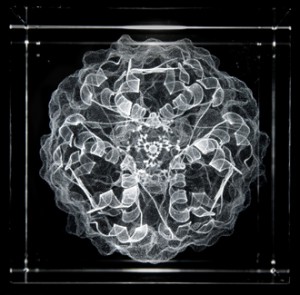



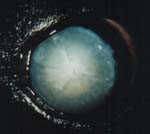
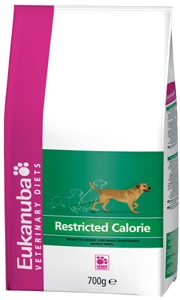
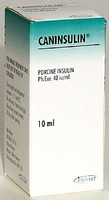
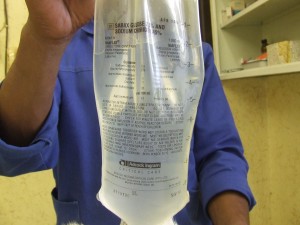

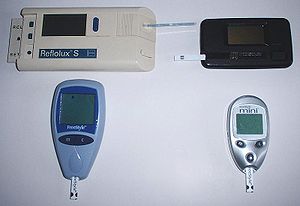
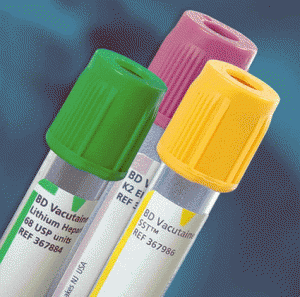



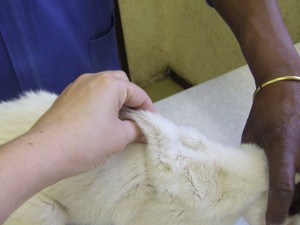

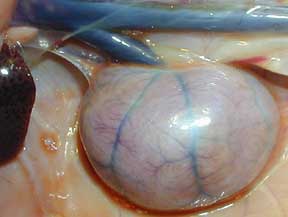
Leave a Reply
You must be logged in to post a comment.